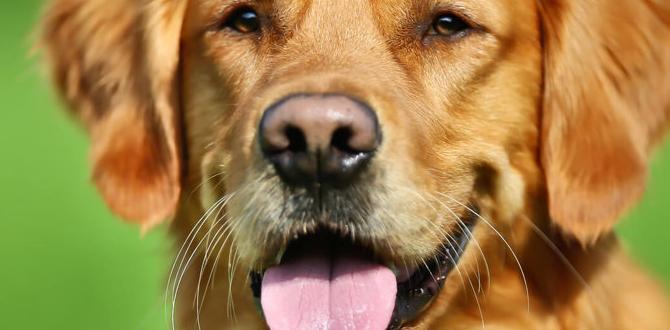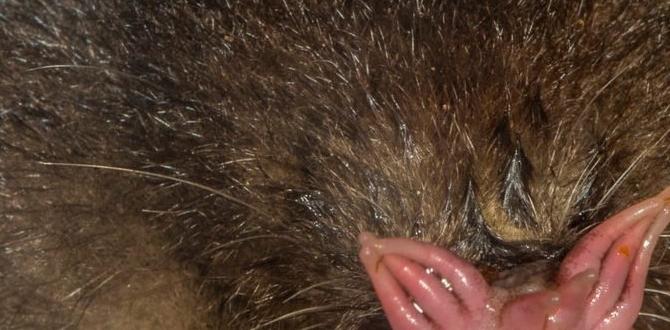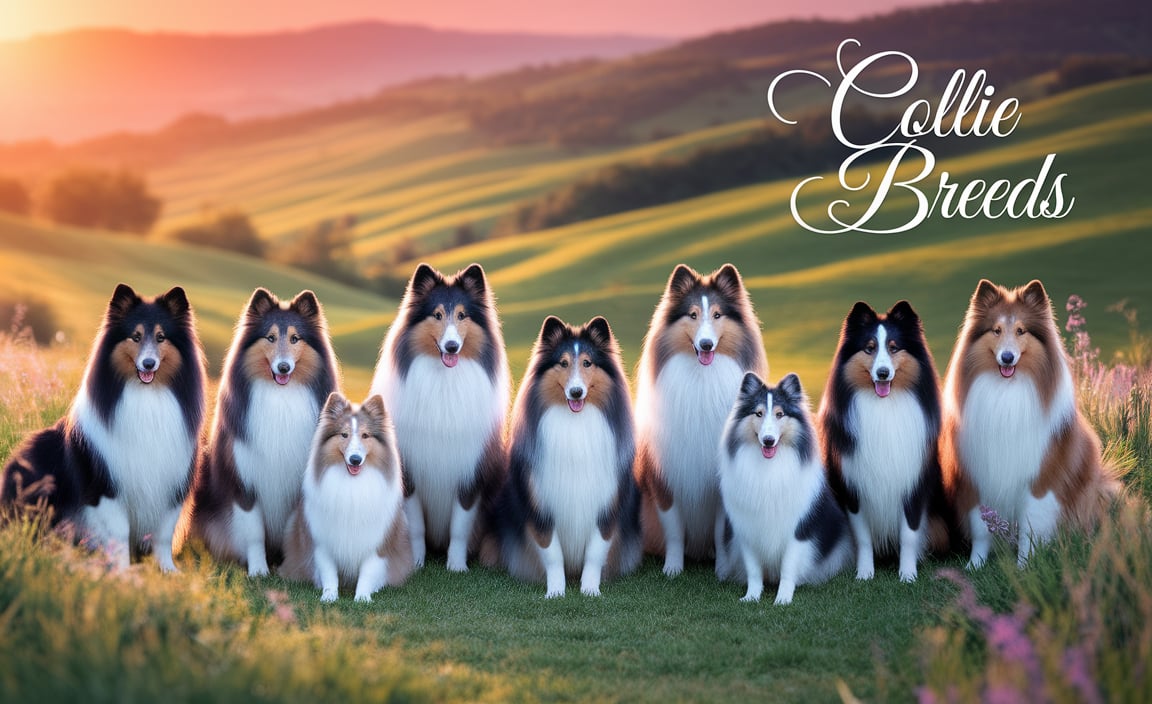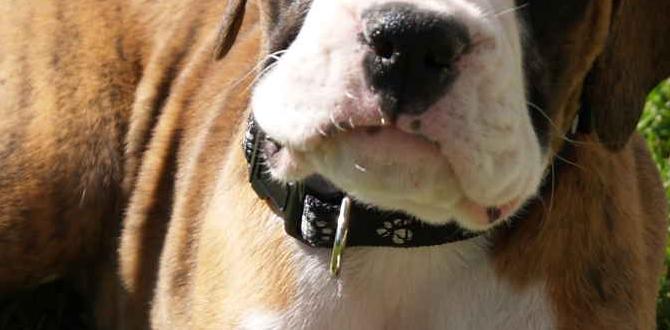Quick Summary: Effectively stop your dog from jumping on people with consistent training. Focus on rewarding calm behavior, managing greetings, and teaching an alternative action like “sit.” Patience and positive reinforcement are key to achieving a polite pup who greets guests appropriately.
Does your furry friend greet everyone with enthusiastic leaps? It’s a common, well-intentioned behavior, but for many owners, it can be a source of embarrassment or even a safety concern, especially with children or older guests. If your dog’s excitement translates into jumping, you’re not alone! Many dogs do this because they’re simply trying to get closer to your face to say hello. The good news is that with a little understanding and a consistent approach, you can guide your dog towards calmer, more polite greetings. We’ll break down proven methods to help your dog keep all four paws on the floor. Get ready to transform those boisterous greetings into delightful welcomes!
Understanding Why Dogs Jump
Before we dive into solutions, let’s quickly touch on why our canine companions jump. It’s usually rooted in positive intentions, even if the execution is a bit… much! Understanding the “why” helps us respond more effectively.
Instinct and Excitement
Puppies jump up to greet their mothers and pack members, often licking their faces as a sign of affection and submission. This behavior can carry into adulthood when they’re excited to see their favorite humans. They’re simply trying to get eye-to-eye with you, and jumping is their quickest way to achieve that!
Seeking Attention
If jumping is the only way your dog gets a reaction, they’ll keep doing it. Even negative attention, like pushing them off or scolding, can still be seen as attention to a dog. They learn, “If I jump, my human notices me!”
Lack of Training
Simply put, many dogs don’t know any other way to greet people. If they haven’t been taught alternative behaviors, like sitting for greetings, jumping can become their default response.
Proven Solutions for Stopping Dog Jumping
The key to stopping unwanted jumping is consistency and teaching your dog what you do want them to do instead. It’s a journey that requires patience, but the results are incredibly rewarding. Let’s look at some tried-and-true methods.
1. The “Ignore and Reward” Method
This is one of the simplest yet most effective techniques. When your dog, or any dog for that matter, jumps on a person, that person should immediately turn away, fold their arms, and completely ignore the dog. No eye contact, no talking, no touching. The moment all four paws hit the floor, the person can turn back and offer praise or a gentle pet.
How it Works:
- Withdrawing Attention: Dogs thrive on interaction. By taking away all attention when they jump, you teach them that the behavior is not rewarding.
- Rewarding Calmness: As soon as they offer the desired behavior (four on the floor), they instantly get the attention and praise they were initially seeking. This creates a clear cause and effect.
This method can be especially effective during greetings. If your dog jumps on you when you come home, don’t greet them with wild enthusiasm until they calm down. Wait for a moment when they have all four paws on the ground before giving them your attention.
2. Teach an Alternative Behavior: The “Sit” Command
Instead of just stopping a behavior, it’s always better to teach your dog what to do instead. For greetings, the “sit” command is perfect.
Steps to Teach “Sit” for Greetings:
- Practice “Sit” Regularly: Ensure your dog knows the “sit” command reliably in a calm environment. Reward them with treats and praise when they sit.
- Introduce Distractions: Practice “sit” with mild distractions, like someone walking by at a distance.
- Practice with Visitors: The next step is to have a friend or family member help. Instruct your guest to approach your dog.
- Cue the “Sit”: As your guest approaches, say “Sit!” Before your dog has a chance to jump, cue them to sit.
- Reward Heavily: If your dog sits, have your guest immediately praise them and offer a small, high-value treat (from their hand, not just dropped on the floor).
- If They Jump: If your dog jumps, your guest should immediately stand up straight, turn away, and withdraw all attention (as in the “Ignore and Reward” method). Wait for the dog to sit or stand with all four paws on the floor, then have the guest try again.
- Gradually Increase Difficulty: As your dog improves, have guests approach from different angles, and eventually, have them greet your dog while standing or moving a bit.
This teaches your dog that sitting in front of a person is what earns them positive attention and rewards. It gives them a clear job to do during greetings.
3. Leash Management
For dogs that are particularly exuberant or have a hard time controlling their impulses, a leash can be a valuable training tool, especially when guests arrive.
When and How to Use a Leash:
- First Few Minutes of Arrival: When guests first arrive, keep your dog on a leash and tethered to you or a piece of sturdy furniture. This prevents them from practicing the jumping behavior while you’re managing the initial excitement.
- Controlled Greetings: Have your guest approach your leashed dog. Cue your dog to “sit.” When they sit, have your guest calmly pet them and offer praise or a treat.
- Release for Calm Behavior: Once your dog is calm and has greeted the guest politely (while leashed), you can let them off-leash, provided they can maintain good behavior. If they start to jump again, it’s time to put the leash back on.
- “In Case of Emergency”: Keep a lightweight leash handy near the door if you anticipate a lot of excitement or if you have a dog that struggles with impulse control.
Leash management isn’t a punishment; it’s a management tool that sets your dog up for success and prevents them from rehearsing unwanted behaviors.
4. Managing the Environment
Sometimes, the best way to prevent jumping is to control the situation before it happens. This is especially useful when you know your dog tends to get overstimulated.
Environmental Management Strategies:
- Crate or Separate Room: If your dog gets overwhelmingly excited when guests arrive, consider having them in their crate or a separate, comfortable room with a high-value chew toy or puzzle feeder for the first 15-30 minutes. This allows guests to settle in without immediate doggy chaos.
- Baby Gates: Use baby gates to create a barrier to temporarily keep your dog from overwhelming guests, especially if they’re hesitant about dogs or if your dog is particularly jumpy.
- “Quiet Zone”: Designate a specific spot for your dog to go to (e.g., their bed) when guests arrive. Reward them for staying there calmly.
Environmental management is about preventing mistakes by controlling the situation and setting your dog up for success.
5. Exercise and Mental Stimulation
A tired dog is a good dog! A dog with pent-up energy is much more likely to jump out of excitement or frustration.
Why it Matters:
- Reduces Excess Energy: A good romp at the park, a brisk walk, or a vigorous play session before guests arrive can significantly calm your dog.
- Builds Bond: Dedicated playtime also strengthens your bond, making your dog more attuned to your cues.
- Mental Workout: Don’t forget mental stimulation! Puzzle toys, nose work games, and training sessions can tire a dog out just as much as physical exercise. The Veterinary Oral Health Council (VOHC) recommends dental chews and toys that also provide mental enrichment for a well-rounded dog.
Ensure your dog is getting enough physical activity and mental challenges daily. This is foundational for good behavior, not just for jumping, but for all aspects of training.
6. Teaching “Off”
While preventing jumping is ideal, sometimes you need a cue to tell your dog to get down if they do jump. The “Off” command is useful, especially with children or people who might not be able to react as calmly.
How to Teach “Off”:
- When Dog Jumps: As soon as your dog jumps on you, firmly say “Off!”
- Lure Them Down: Simultaneously, lure them down with a treat held low to the ground, or gently step on their leash loop if they are leashed.
- Reward When Down: The moment their paws touch the floor, give them the treat and praise.
- Withdraw Attention: If they don’t dismount immediately, withdraw attention until they do.
- Consistency is Key: Everyone in the household needs to use this command consistently.
The goal is to make “Off” a clear signal that jumping stops the fun and getting all four paws on the floor earns rewards.
Training Tools and Aids
While positive reinforcement is the cornerstone, a few simple tools can help immensely, especially in the early stages.
| Tool | How it Helps | When to Use |
|---|---|---|
| Treats (High-Value) | Essential for rewarding desired behavior (sitting, calm greetings, “off”). Keeps training engaging. | During all training sessions, especially when practicing greetings. |
| Leash | Prevents jumping, allows for controlled greetings, and helps manage overexcitement. | When guests arrive, during initial greetings, or if your dog struggles with impulse control around people. |
| Puzzle Feeders/Chew Toys | Provide mental stimulation and a calming outlet, reducing pent-up energy. | When guests arrive, or when your dog needs a distraction to prevent unwanted behaviors. |
| Baby Gates | Create temporary barriers to manage your dog’s access to guests, preventing overwhelming situations. | When managing larger groups of people or if your dog is particularly prone to jumping on newcomers. |
Common Mistakes to Avoid
Even with the best intentions, some common pitfalls can hinder your progress. Being aware of these will help you stay on track.
- Inconsistency: If one person lets the dog jump and another scolds them, the dog will become confused. Everyone needs to be on the same page.
- Rewarding Jumping (Unintentionally): Petting, talking to, or even pushing your dog away when they jump can inadvertently reinforce the behavior because they are getting attention.
- Punishment Over Training: Yelling, jerking the leash, or using harsh methods can create fear and anxiety, damaging your relationship and potentially leading to other behavioral issues, without teaching the dog what to do.
- Expecting Too Much Too Soon: Behavior change takes time. Don’t get discouraged if your dog has an occasional lapse during training. Refocus and try again.
- Not Managing the Environment: Letting your dog practice jumping repeatedly, especially with new people, makes it harder to retrain them.
A Note on Training with Children
Teaching children how to interact safely and calmly with dogs is crucial. When children are involved, the stakes are higher, and supervision is paramount.
Tips for Teaching Kids:
- “Be a Tree”: Teach children that if a dog jumps on them, they should stand still, fold their arms, and look away – just like the “Ignore and Reward” method. Running away can sometimes trigger a chase instinct in dogs.
- Calm Arrivals: Encourage children to let the dog settle down before approaching or greeting them.
- Ask Permission: Teach children to always ask the owner before petting or interacting with a dog, even if they know the dog.
- Supervised Interaction: Always supervise interactions between dogs and young children.
For more information on child-dog safety, resources from organizations like the American Academy of Pediatrics can offer valuable guidance.
Building a Great Relationship Through Training
Training your dog to greet people politely isn’t just about stopping a bothersome habit; it’s about building a stronger, more trusting relationship between you and your dog, and between your dog and the world.
The Benefits Extend Beyond Greetings:
- Increased Trust: When dogs learn what is expected of them and are rewarded for good behavior, they develop more confidence and trust in their owners.
- Better Socialization: A dog that can greet people calmly is more likely to be invited to more places and have more positive social interactions.
- Reduced Stress for Everyone: Imagine walking into a friend’s house knowing your dog will greet them calmly. It reduces stress for you, your dog, and your guests.
- Enhanced Communication: The training process itself sharpens your communication skills with your dog, making it easier to address other behaviors.
Think of every training session, even the short ones, as an investment in your dog’s happiness and well-being, and your own peace of mind.
Frequently Asked Questions (FAQ)
Why does my dog jump on everyone, even when they’ve been trained?
Even trained dogs can revert to old habits when very excited or stressed. Inconsistency in training (at home or by others), overwhelming situations, or lack of sufficient exercise can all contribute. Continuous practice and management are key, even for well-behaved dogs.
How long does it take to stop a dog from jumping?
The timeline varies greatly depending on the dog’s age, breed, personality, previous training, and the consistency of the owner. Some dogs respond within a few weeks, while for others with deeply ingrained habits, it can take several months of dedicated effort.
Can I use a shock collar or prong collar to stop jumping?
While these tools might suppress jumping, they are generally not recommended by positive reinforcement trainers. They work through punishment and can cause fear, anxiety, and potential aggression. They don’t teach the dog what to do, only what not to do, and can damage your bond. Positive, reward-based methods are more effective and humane.
What if my dog jumps on people when I’m not around?
This is a management and training issue that needs to be addressed by everyone who interacts with your dog. If friends or family members don’t follow the training guidelines (e.g., they pet the dog while it’s jumping), your dog will continue to learn that jumping is acceptable. You may need to explain your training plan to them and ask for their cooperation.
My dog only jumps on visitors, not me. What’s different?
This is quite common! Your dog likely sees you as the primary caregiver and has a strong established bond, perhaps understanding your cues more readily. Visitors are often more exciting, or the dog may feel a greater need to “greet” and get attention from new people. The principles remain the same: manage the greetings and reward calm behavior.
Is jumping always a sign of aggression?
No, jumping is almost never a sign of aggression. It’s typically an expression of excitement, a learned behavior to get attention, or an instinctual greeting method. Aggression usually involves different body language, such as stiffening, growling, lunging with intent to harm, or snapping.
Conclusion
Helping your dog learn to greet people politely is a rewarding journey that strengthens your bond and makes everyday life more enjoyable for everyone. Remember that consistency, patience, and positive reinforcement are your most powerful tools. By understanding why your dog jumps, implementing proven strategies like rewarding calmness, teaching an alternative behavior such as “sit,” and managing the environment, you can transform excitable leaps into graceful greetings. Celebrate small victories, stay committed to your training plan, and you’ll soon have a dog that greets the world with a wagging tail and all four paws firmly on the ground. Happy training!
Meet Elyse Colburn, the devoted canine companion and storyteller behind the enchanting world of “Tales, Tails, and Adventures Unleashed.” A passionate dog enthusiast with a heart full of paw prints, Elyse Colburn shares heartwarming tales and insightful adventures, celebrating the joy, loyalty, and endless antics that make every dog a true hero. Join Elyse Colburn on this tail-wagging journey, where every post is a love letter to our four-legged friends.






